Wednesday, 10 March 2021
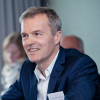
Prof. Michael F. Rohde, FILD, LiTG
Michael F. Rohde, is a German based practicing lighting designer and Professor at the Faculty of Architecture and Design, Architectural Lighting Design at the Hochschule Wismar, University of Technology, Business and Design Wismar, Germany. He completed his studies of Architecture at Karlsruhe University, Germany.
After three years of practice as an architect, he obtained a Master of Science degree in Light and Lighting from the Bartlett School of Architecture at UCL in London, UK.
In 1998, he founded L‐Plan Lighting Design, an independent lighting design practice in Berlin, Germany. L-Plan provide lighting design services in all areas of artificial and day lighting for built environments.
In 2008, Michael established the Light Symposium Wismar (LSW), in concurrence with the 100th anniversary of Hochschule Wismar (HSW), to create an interdisciplinary event where light and health could be holistically addressed and connected with research and practice.
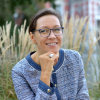
Asst. Prof. Dr. Karolina M. Zielinska-Dabkowska,
IALD, IES, CIE, MSLL, RIBA
Karolina M. Zielinska-Dabkowska, is a practising lighting architect, researcher & educator.
She completed her Master’s degree (2002) and PhD degree (2013) in Architecture and Urban Planning at Gdańsk University of Technology (GUT), Poland. She also has a degree in Architectural Engineering at HAWK, Hildesheim, Germany (2004).
As a trained architect, she pursued a career in lighting by working for several world-renowned lighting design firms in Berlin, London, New York, and Zürich.
Since 2018, Karolina is also an Assistant Professor at the Faculty of Architecture, Gdansk University of Technology, Poland, and co-founder of GUT LightLab, where she conducts research on various aspects of light and lighting in the built environment.
Karolina is a professional member of the Royal Institute of British Architects (RIBA) and the International Association of Lighting Designers (IALD).
She is also actively engaged in the Technical Committee work of international organisations such as the International Commission on Illumination (CIE), Illuminating Engineering Society (IES), and International Dark-Sky Association (IDA), providing guidelines and sharing best practice for night-time illumination in the built and natural environment.
Thursday, 11 March 2021
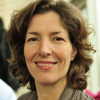
Ass. Prof. Dr. Marie-Claude Dubois
Marie-Claude Dubois, is an Associate Professor at the Faculty of Engineering, LTH, Department of Architecture and the Built Environment, Lund University, Sweden. After obtaining her PhD in 2001 from the Faculty of Engineering at Lund University, she served as an expert on sustainable design for White architects (2012-2020), as Associate Professor at Laval University, Canada (2003-2010), and as a Senior Researcher within the Daylight Group of the Danish Building Research Institute (2001-2003). She has contributed to more than 100 scientific publications in the field of daylighting, building simulation, solar shading, solar energy and climatic design. She has previously been Subtask leader of International Energy Agency Task 50 (Lighting Retrofit), and Task 41 (Solar Energy and Architecture). She is currently on a research sabbatical at the Swedish University of Agriculture Sciences in Alnarp, Sweden.
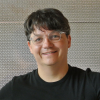
Giovanni Traverso
Giovanni Traverso, is an Italian practicing architect and lighting designer.
He graduated from the Faculty of Architecture, University of Venice (IUAV), Italy and has a specialization in Daylight design from the Bartlett School of Architecture, UCL, UK.
In 1994, he was nominated for CIBSE Young Lighter of the Year, for his art gallery daylight control system.
Giovanni, is the founder of Traverso-Vighy Architetti studio, based in Vicenza, Italy; specializing in sustainable architecture and experimental projects, related to the use of light. The practice is dedicated to sharing and inspiring the idea for a more people-centric architecture and landscape design, with awareness on the experience of well-being and environmental conservation. The zero-energy building Tvzeb, the social farm Corte Bertesina, and the new Salvagnini Headquarters in Sarego (Italy) and Cincinnati (USA) are recent project examples of the studio design approach.
Giovanni, has taught courses in daylight, artificial lighting and architecture, at the Sapienza University of Rome (2004), and at the University of Venice (2003, 2004, 2009).
In 2012, he was in charge of “Daylight Thinking the University of Florida's summer school in Vicenza/Italy, which explored natural lighting and its simulation and integration in architecture.
He is currently a lecturer at the School of Architecture at University of Florida/USA (2007-present).
He is an author of Modelling Daylight: A Manual for Natural Light Experimentation, this book is also available in Italian and German language.
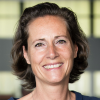
Prof. Dr. Marilyne Andersen
Marilyne Andersen, is a Full Professor at the Swiss Federal Institute of Technology Lausanne (EPFL) and the Head of the Laboratory of Integrated Performance in Design (LIPID). Her research focuses on the impact of daylight on building occupants, based around comfort, perception and health within an architectural design context; thereby reaching out to other fields of science, from chronobiology and neuroscience to psychophysics and computer graphics.
With a background in physics, she was a tenure-track professor at Massachusetts Institute of Technology (MIT) from 2004 to 2010, and served as the Dean of the School of Architecture, Civil and Environmental Engineering at EPFL from 2013 to 2018, is Academic Director of the Smart Living Lab. She is the co-founder of the consulting start-up OCULIGHT dynamics, offering specialized consulting services on the psycho-physiological effects of light in design.
She is the author of over 200 scientific papers with several distinctions. She was the inaugural laureate of the Daylight Research Award in 2016, and led the winning team for the US Solar Decathlon 2017 competition. She is a member of the Editorial Board of the Building & Environment, LEUKOS and Buildings & Cities journals.
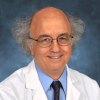
Prof. Dr. George C. Brainard, CIE, FIES
George C. Brainard, is an American based Director of the Light Research Program and Professor of Neurology at Jefferson Medical College, Thomas Jefferson University, USA.
For the last thirty-five years Dr. Brainard's academic work has been concerned with the effects of light on biological aspects and assessing behavioral responses in animals and humans. His research on the effects of light have been supported by grants from the NASA, National Institutes of Health, FDA, DOE, DOD as well as from Philips, OSRAM, Panasonic, and other industrial and private sources. He has authored over 110 original research articles and over 50 book chapters.
He has written/co-authored 12 books or monographs including five lighting standards for the Illuminating Engineering Society of North America (IESNA).
Dr. Brainard has been the US Division Sixth Director for the International Commission on Illumination (USNC/CIE) since 1992.
He has chaired the IESNA Photobiology Committee for ten years, and is currently the co-chair of the IESNA Light and Health Committee.
He was recently named as the IESNA Fellow in 2019.
He has been honored with the Johnson Space Center Director’s Innovation Award (2015), the Research Award from the Professional Lighting Design Convention (2013), and the Research Award for Excellence on Photobiology, Photochemistry and Photophysics, from the American Society for Photobiology (2010).
During his career, Dr. Brainard has taught neuroanatomy, neurochemistry and neurophysiology to over 9,000 medical and science graduate students. He has received the Lindback Foundation Award for Distinguished Teaching.

Prof. Dr. John Mardaljevic, FSLL, FIBPSA
John Mardaljevic, is Professor of Building Daylight Modelling in the School of Architecture, Building & Civil Engineering, Loughborough University, UK. He pioneered what is now known as Climate-Based Daylight Modelling (CBDM). Founded on rigorous validation work, CBDM is now the basis for research and industry practice worldwide. Mardaljevic's practice-based research and consultancy includes major projects such as Daylighting the New York Times Building and acting as Expert Witness in notable rights to light cases, e.g. Chelsea Stadium. He served as the 'UK Principal Expert on Daylight' for the European Committee for Standardisation, and devised the formulation of the daylight performance basis of EN 17037: 2018 – Daylight in buildings (adopted by all 34 CEN member states). In 2012 he was presented the annual UK lighting award by the Society for Light and Lighting (SLL).
He was Associate Director for Daylighting CIE Division 3 and CIE-UK D3 Representative between 2012-19. In 2017 he received the IBPSA Innovative Application Award. In addition to simulation, Mardaljevic has devised novel camera-based measurement techniques to quantify daylight illumination fields for conservation purposes in heritage settings.
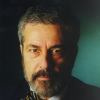
Dr. Ahmet Cakir
Ahmet Çakir, is a German based Director of the ERGONOMIC Institute, Berlin.
He studied telecommunication technology at the Technical University of Berlin, Germany. After receiving his doctorate degree in lighting technology, he served a research fellow with the Institute of Ergonomics, where he investigated VDT utilisation in German industries, sponsored by the Federal Ministry of Labour and Social Affairs. The scientific outcome of this study forms the main basis for German standards governing computerised workplaces. He was the principal author of “The VDT Manual”, which was published in five languages.
Since 1980, he has been the scientific manager of the ERGONOMIC Institute for Social and Occupational Sciences in Berlin, Germany.
He is a fellow of the Ergonomic Society and editor-in-chief of the scientific journal Behaviour & Information Technology. He is also chair of the international committee ISO/TC159/SC4/WG3 responsible for the standardisation of workspace and the work environment, and of the national German committee NAErg/NIA: Ergonomics for Information Processing Systems.
The publication of his research report “Light and Health” in 1990 marked the beginning of the ongoing debate on the health effects of lighting in work environments.
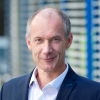
Dr. Jan de Boer, LiTG, IEA
Jan de Boer, is consulting engineer, researcher and educator.
In 1994, he obtained Master’s Degree in Electrical Engineering at the University of Bochum, Germany, and in 1995 obtained PhD at the University of Stuttgart, Germany.
From 1994 to 1995, he was a consulting engineer in a lighting design office. From 1995 to 1996, he was a Research Associate at the Chair of Building Physics at the University of Stuttgart, Germany. Since 1996, he is a Group Leader at Lighting Technology and Passive Solar Systems in the Department of Energy Efficiency and Indoor Climate at the Fraunhofer Institute for Building Physics (IBP) in Stuttgart, Germany. Since 2005, he holds different teaching assignments, at the University of Stuttgart, and various other universities. He is a member and coordinator of several standardization committees and working groups, focussing on energy efficient lighting. He is a speaker of the scientific technical Committee of the German LiTG on the topic daylighting.
Between 2013-2015, he was Operating Agent of Solar Heating & Cooling programme of International Energy Agency IEA-SHC Task 50 “Advanced Lighting Solutions for Retrofitting Buildings” and since 2018, he is Operating Agent of IEA-SHC Task 61 / EBC Annex77 “Integrated Solutions for Daylighting and Electric Lighting”
Friday, 12 March 2021
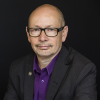
Mark Major BA (Hons) Dip Arch RIBA FRIAS FIALD RDI
Mark Major trained and practised as an architect prior to focusing on the unique relationship between light and architecture.
He has worked on a wide range of award-winning lighting projects including the Millennium Dome, 30 St. Mary Axe, Beijing International Airport, the refurbishment of Royal Festival Hall and the re-lighting of the interior of St. Paul’s Cathedral. He is a specialist in the field of urban lighting and was named as a key city advisor by Monocle in 2013.
Mark acted as the Lighting Design Advisor to the Olympic Delivery Authority for London 2012 and was appointed to the Mayor of London’s Special Assistance team for the Outer London Fund in the same year.
With an active interest in architectural and lighting education Mark has lectured extensively in the UK, Europe, Scandinavia, U.S. and Australia. He was the co-creator of an educational project ‘Made of Light – the Art of Light and Architecture’.
Mark is a corporate member of the Royal Institute of British Architects, a Fellow of the International Association of Lighting Designers and a Fellow of the Royal Incorporation of Architects in Scotland.
He was named a Royal Designer for Industry in 2012 and is currently serving as Master of the Faculty of Royal Designers for Industry until 2022.
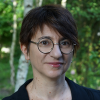
Anne Bureau, ACE, EILD, IALD
Anne Bureau, is a French based practicing lighting designer.
She graduated in industrial design from the French National Institute for Advanced Studies in Design (ENSCI), France.
In 1995, she started her lighting design consultancy, and established WONDERFULIGHT lighting design practice in 2011. Through her career in lighting design, Anne has worked on numerous projects such as: Lumen, la Cité de la lumière, office for the Cluster Lumière in Lyon Confluences, Renovation of the coastal lighting masterplan of Biarritz (with Quartiers Lumières), Museum of art of Toulon, Chapelle Corneille in Rouen, concert hall for Normandy Region, Najac village, Quay of Saint-Goustan and quay Franklin in Auray, Foundation Vincent Van Gogh in Arles, DS World in Paris, Cathar castles of Quéribus and Puilaurens and The Musée de l'Orangerie in Paris.
Anne is a member of the Board of Directors of International Association of Lighting Designers (IALD). She has been the past president of French Association of Light Designers (ACE), as well as the board member of Encuentro Iberoaméricano de Lighting design (EILD).

Catherine Pérez Vega, MA, PhD CAND.
Catherine Pérez Vega, is a Panamanian interdisciplinary designer and researcher. She holds a bachelor degree in Product Design from L’École Supérieure de Design from France and a master degree in Architectural Lighting Design at Hochschule Wismar, University of Applied Sciences, Technology, Business, and Design, Germany.
She is currently a Doctoral candidate in Biology at Freie Universität Berlin, Germany with her research taking place at the Light Pollution and Ecophysiology research group of Leibniz Institute for Freshwater Ecology and Inland Fisheries. Her work involves the interphase of ecology and architectural lighting to mitigate environmental solutions for urban lighting design applications.

Prof. Dr. Eva S. Schernhammer, MD
Eva Schernhammer, is a US-Austrian epidemiologist, Professor and Chair of the Department of Epidemiology at the Medical University of Vienna, Austria. Since 2003, she has been faculty at the Harvard T.H. Chan School of Public Health, and the Channing Division of Network Medicine at Harvard Medical School, home of several renowned cohort studies including the Physicians’ Health Study and the Nurses’ Health Study, where over the past 17 years she has led numerous projects related to her primary research interest in the field of lifestyle biomarkers, the environment, and chronic disease risk.
She completed her medical training in Vienna and practiced for several years in internal medicine before becoming interested prevention and public health.
Schernhammer holds a Doctor of Medicine degree from the University of Vienna Medical School, a Doctor of Public Health degree (epidemiology) from the Harvard T.H. Chan School of Public Health, as well as a Master of Science degree in psychology from the University of Vienna. She completed her medical training in Vienna and practiced for several years in internal medicine before becoming interested in prevention and public health.

Prof. Dr. Kevin Houser, PE (NE), FIES, LC, LEED AP
Kevin Houser, is a Professor at Oregon State with a joint appointment at Pacific Northwest National Laboratory. He is also editor-in-chief of LEUKOS, the journal of the Illuminating Engineering Society (IES).
He has published more than 125 publications about light and lighting.
He’s won the CIBSE Leon Gaster and Walsh Weston Awards, IES Taylor Technical Talent Award three times, the IES Presidential Award, and is a Fellow of IES. His recent work focuses on human perceptual and biological responses to optical radiation.

Dr. John C. Barentine, AAS, FRAS, IAU
John Barentine, is the Director of Public Policy for the International Dark-Sky Association (IDA). He earned a Ph.D. in astronomy from the University of Texas at Austin, and previously held staff positions at the National Solar Observatory, Apache Point Observatory, and the Sloan Digital Sky Survey. Throughout his career, he has been involved in education and outreach efforts to help increase the public understanding of science. He is a member of the American Astronomical Society and the International Astronomical Union, and is a Fellow of the Royal Astronomical Society. The asteroid (14505) Barentine is named in his honor. His interests outside of astronomy and light pollution research include history, art and architecture, politics, law and current events.
